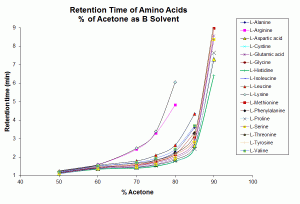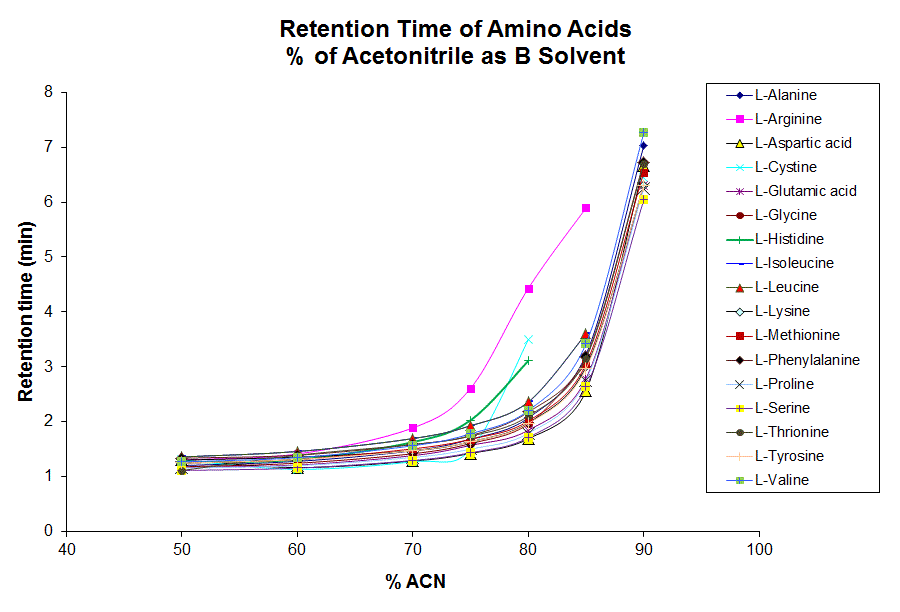The simple answer is yes you can use acetone as a mobile phase solvent instead of acetonitrile if you are not using UV detectors.
You may not use it with UV detectors commonly found in HPLC because Acetone has a low UV cutoff and therefore may be a problem for UV detection with compounds that adsorbs at a low wavelength. However, UV cut off or adsorption is not a problem when using LCMS or ELS detectors such as the Corona CAD. You can use Acetone to replace Acetonitrile with the Cogent TYPE-C™ HPLC Columns but it is important to note that while most compounds will retain and elute in similar fashion with either solvent, that cannot be said for every compound.
Different polar, aprotic solvents used as the organic component in ANP mode can lead to differences in retention for many compounds. Shown below in the two figures are two retention maps of various amino acids that differ in which solvent is used as the organic component. In one figure, acetonitrile is used while in the other acetone is used. From the data, it can be seen that several amino acids give significantly different retention profiles based on which solvent is used. This can be useful in method development to help separate a peak pair that may elute close together using one solvent, but are well-resolved with the other.


![]() Method Conditions:
Method Conditions:
Column: Diamond Hydride, 4um, 100A, 2.1 x 150mm
Flow rate: 0.4 mL / minute
Mobile Phase:
Solvent A: DI Water + 0.1% Formic Acid
Solvent B: Acetonitrile or Acetone + 0.1% Formic Acid
Caution: Using Acetone with Primary Amines When working with Acetone as an HPLC solvent it is important to note that primary amines could react with Acetone to form imines. However, to achieve this reaction the mobile phase would most likely need to be free of water and or acid as a catalyst. It is reported by the University of Liverpool that “Imines are formed when any primary amine reacts with an aldehyde or ketone under appropriate conditions. Imine formation requires an acid catalyst, otherwise the reaction is very slow. the acid is needed for the elimination of water.”
Working with the above and other methods in ANP, we have not seen the formation of imines occur.


